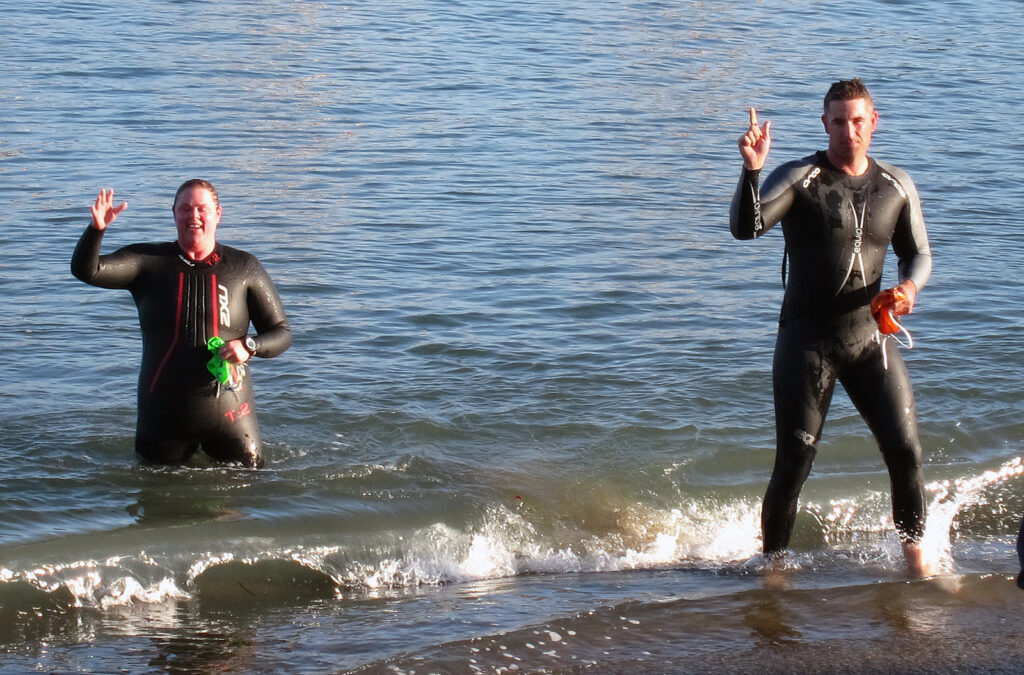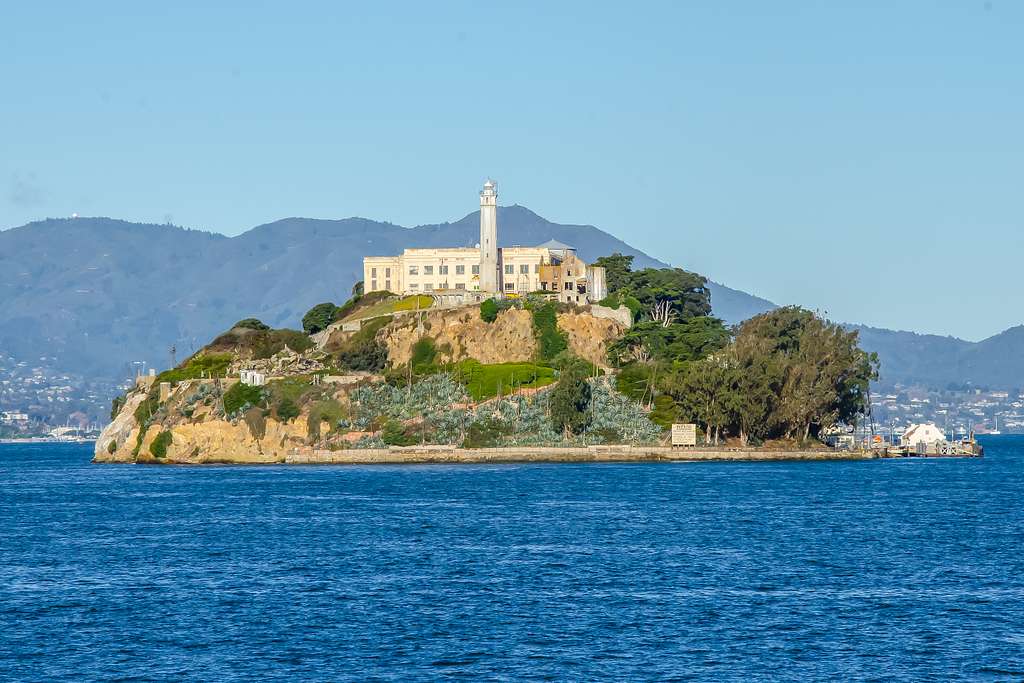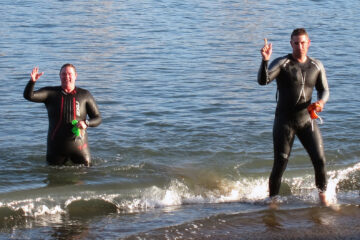How To Plan Your Escape From Alcatraz Swim
Fleeing the unescapable Alcatraz has been part of the collective consciousness since the prison island’s inauguration in 1939, up until today. Conquering the temperamental, frigid waters separating shackles from sweet freedom have been the fodder for movies, books, video games, and songs. However, is planning your escape from Alcatraz impossible? I’m here to tell you, from experience, it is not. But how to make the transition from landlubber to full-tilt sea monster? I’m here to help with that.
I made my escape from Alcatraz in August 2014. At that time in my life, I felt like I needed some structure and somehow decided jumping off a boat at Alcatraz and swimming to Crissy Field was the best way to accomplish that. At the beginning of this adventure, I had no gym membership, no swimming wetsuit, and no real idea of what the fuck I was getting myself into. This is where my swim coach, John “JJ” Jenkins, comes into the picture.
JJ is a lot of things, including being the owner of the notorious Merchant’s Saloon and co-owner of Baggy’s by the Lake. He also captains the Merchants Saloon Tri-Athalon Team, the best and fastest bar employee team in California you probably didn’t know existed. I sat down with JJ to mine him for tips on how to train for your own escape.
First things first, how many times have you done an Alcatraz swim?
Seven.
How did you get into distance swimming?
I swam as a kid, and as I got older I decided to do a triathlon because it sounded challenging and I wanted to set a goal that would let me try and get myself back into shape. I hate running, and I ended up hurting my knee. Swimming was easy by comparison.
What was your background in swimming before these races?
I swam in the AAU, which is a big junior league, pre-high school. So I had a foundation of swimming, as far as distance swimming goes, but it’s really different than open ocean races.
What’s the difference?
The transition was learning how to stretch out my stroke and glide a lot more. You’re trying to become leaner in the water, so you’re using less energy. So you’re moving relatively quickly, and your body is positioned to not drag your legs.

FEMA Region IX staffers, Heather Duschell and Tomas Kaselionis, arrive on the shoreline of San Francisco’s Aquatic Park after completing a challenging 1.25 mile race that began from the infamous Alcatraz prison. Photo courtesy of the National Archives
When I tell folks about the race, they always ask me about sharks and scary ocean stuff. What’s your take on how to deal with the head fuck of doing the swim?
Open water is really scary for a lot of people because they can’t see the bottom. It’s a big weird head fuck, because you don’t know what’s around you, and you’re in a big body of water with all sorts of stuff swimming around you. The only way to get over it is to do it.
We did the Oakland Triathalon, and one of the guys competing had never done a swim before, never any open water swimming, and it really freaked him out. So we went down to the estuary and started small. Doing small parts. I gave him tips, swim there, swim back. As he got more comfortable, we started going farther and longer, and eventually, he got over it.
Any tips for people who want to train but are not sure how to start or where to get in the water?
Yeah. Getting a membership to the YMCA is a good way to have access to a pool. But there are lots of public and private pools you can look into.
To actually get in the ocean, you have a few options. The Jack London Aquatic Center (aka the estuary), the Berkeley Marina, the beaches in Pacifica, or the Dolphin Club. Some cost money, some don’t. It’s really important to get in the ocean though because you want to experience swimming with waves and currents.
You’ll need a wetsuit, but you can always look at a sports store. You can also check out Facebook Marketplace or Craigslist for a cheap one.
What kind of advice do you have for folks who are starting training on their own on what they need to think about as far as form and function go?
If you can swim a mile in a pool in under 45 minutes comfortably, you shouldn’t be concerned about swimming to Alcatraz. It can sound hairy, but it’s something you can work up to.
You want to start small and concentrate on your balance and technique. There are a ton of drills you can do that you can find on YouTube. Doing the drills in triathlon swimming and Olympic triathlon swim videos can get you close to a mile. Pay attention to your technique. It can be hard to do if you’re training on your own, but you can always see if there’s a Swim Masters club you can join so you can find people to train with.
Swimming is 80% technique and 20% physicality. A lot of people are like no way, but it’s so fucking true it’s ridiculous. The better technique, the longer you can go, and the longer you can go, the faster you can go.

People doing the Escape From Alcatraz Triathlon. Photo via Wikimedia commons
So you’re all fired up and ready to start training. How do you find a race?
There are quite a few of them. A lot of them are part of a triathlon, but you can just opt to do the swim part. We did The Alcatraz Challenge.
Any final words of wisdom?
There is nothing like being in the middle of the Bay and seeing Alcatraz. The first time I did it, I was as nervous as I was the first time I went sky diving: wet palms, dry mouth. After I finished, it was such a great feeling of accomplishment. It’s something not a lot of people will do or can do. A lot of people have done it and can’t finish.
Let me tell you, from beginning to end, it was one of the most challenging, cold, and rewarding experiences I’ve ever had. It isn’t easy, but if you’re willing to put in the work, you, too, will have bragging rights for life.










